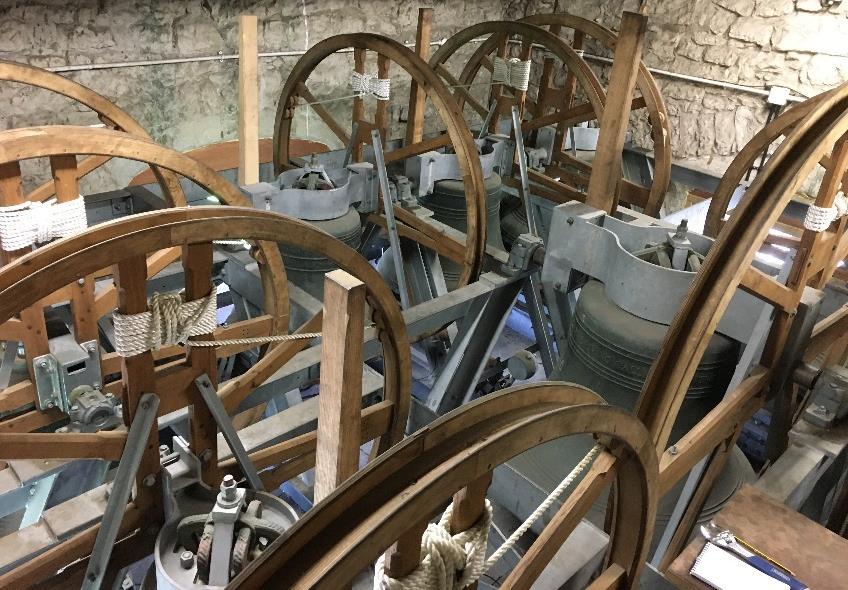
1 minute read
BELL SUNDAY
The Central Council of Church Bell Ringers declared May 14 as Bell Sunday – a new entry into the calendar and a great opportunity to recognise the contribution of bells and bellringers to the life of the Church. Here at All Saints we decided to hold our celebration on July 9 since our focus was ringing in the newly crowned King back in May. Tower Captain Owen Toller reflects on the evocative power of our bells.
There can be few more English sounds than those of bells calling the faithful to worship But perhaps few non-ringers realise what is involved A church bell is pretty big – our largest bell is about 4 feet high and weighs as much as a small car Each bell is fixed to a wooden wheel, several feet in diameter, and the whole massive structure is made to rotate through a complete 360-degree circle each time you hear a ‘dong’. This is done by pulling on a long rope and takes plenty of training; it took me about three months before I could control the rope You don’t have to be strong, though – it’s a knack
Advertisement
Each bell needs one ringer. Ringers dedicate much time and effort to ‘the exercise’, as they call it, but there are many different levels of expertise. At its simplest, you just ring the
bells straight down a musical scale, in what is called ‘rounds’
At the other extreme there are ‘methods’ in which the order in which the bells are rung is different each time, according to particular patterns that ringers memorise Each method is based on a small number of building blocks that are repeated with simple variations. A peal lasts for about three hours and involves ringing over five thousand different orders or changes, hence ‘ringing the changes ’
All Saints is privileged to have a famous ring of ten bells (six or eight is the norm), all cast in the eighteenth century Bell ringing is a ‘classless folk art’ (Betjeman) which has been part of English culture for four hundred years.







